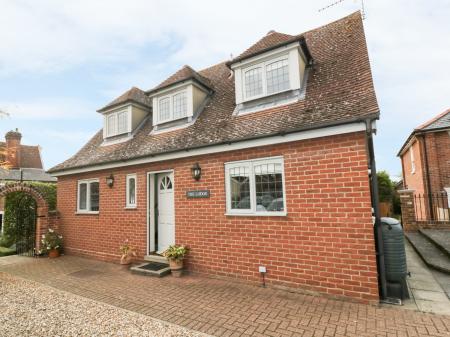
St Mary's was begun around 1350 and was largely complete two hundred years later. It is late Perpendicular in style and incorporates fragments of brick and stone from an earlier church on the site. The south porch, which was painted by Constable, has a priest's chamber above the entrance.
In the north wall of the sanctuary is a recess thought to be an Easter Sepulchre, dating to the 15th century. Beside this recess is a memorial to Maria, wife of John Constable, while a memorial window in memory of the artist is in the south aisle. In the centre aisle of the nave is an early 17th century brass to Robert Alefounder, while the south chapel has a lovely oak screen.
The East Bergholt Bellcage
A new tower for St Mary's was begun in 1525, with financial help from Cardinal Wolsey. But the Cardinal's sudden fall from power meant that the money wasn't available to finish the job, and construction halted in 1530. In 1531 a wooden bellcage was erected on the north side of the churchyard as a temporary measure to house the peal of 5 bells.
As temporary measures go, it was a pretty permanent solution, for the bellcage is still here almost five centuries later. The East Bergholt bells are the heaviest five bell peal in England, but what makes the bellcage unique is that bells are hung upside down (with the open end facing up). The bells are rung regularly using human force on a wooden headstock, not a rope and wheel as you would find with 'normal' bells.
The Constable family tomb stands in the north-east corner of the churchyard. The artist's parents are both buried here, but Constable himself is buried at Hampstead Cemetery in London. Another well-known tomb is that of William Lott, whose house of 'Willie Lott's Cottage' was the subject of one of Constable's most famous paintings. Lott's headstone is beside the main path near the east end of the Lady Chapel.












 We've 'tagged' this attraction information to help you find related historic attractions and learn more about major time periods mentioned.
We've 'tagged' this attraction information to help you find related historic attractions and learn more about major time periods mentioned.




